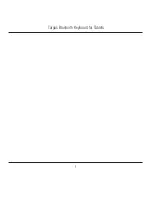
Accubar SDI-12 Barometric Pressure Sensor Operations & Maintenance Manual Rev-B 30 Nov 2017
pg. 42
ERROR DEFINITIONS AND EXAMPLES
Linearity
:
Linearity error is the deviation of the output from a straight line. Many transducers for measuring
physical phenomena have outputs which do not vary linearly with the phenomena being measured.
Sometimes the deviation from linear is slight and is accepted as part of the error of the device, in other
cases manufacturers attempt to "linearize" the output. Usually when this done through an analog
means, there will be a residual non-linearity, i.e., the non-linearity is not completely removed. The
following non-linearity graph illustrates why a two point calibration (zero and full scale) is many times
insufficient and ensures that the maximum error is achieved. A best fit straight line decreases the
maximum error by ensuring that the errors fall evenly on both sides.
Example of Linearity Error
Input
O
u
tp
u
t
-20
0
2 0
4 0
6 0
8 0
1 0 0
0
5 0
1 0 0
Non-linear
Out put
Ideal Out put
Best Fit
Temperature coefficient -- This is made up of two components, the temperature coefficient of the offset
and the temperature coefficient of the slope. These can be referred to as thermal shifts, temperature
dependence, and other names. The offset is sometimes referred to as zero. The slope is sometimes
referred to as span, sensitivity, or scale factor. The following graph illustrates why the temperature
coefficient is an important specification for remote equipment. In an indoor environment a
competitor's barometer is about a 0.5 mB instrument. Over the operating temperature range of Sutron
equipment, it degrades to a +3 mB instrument.




































